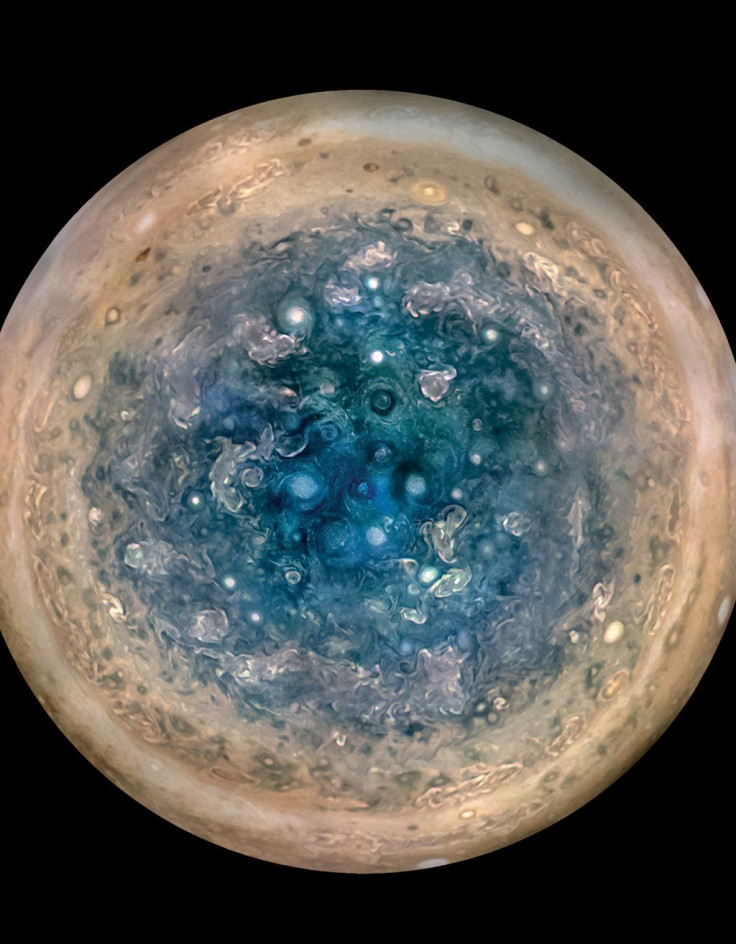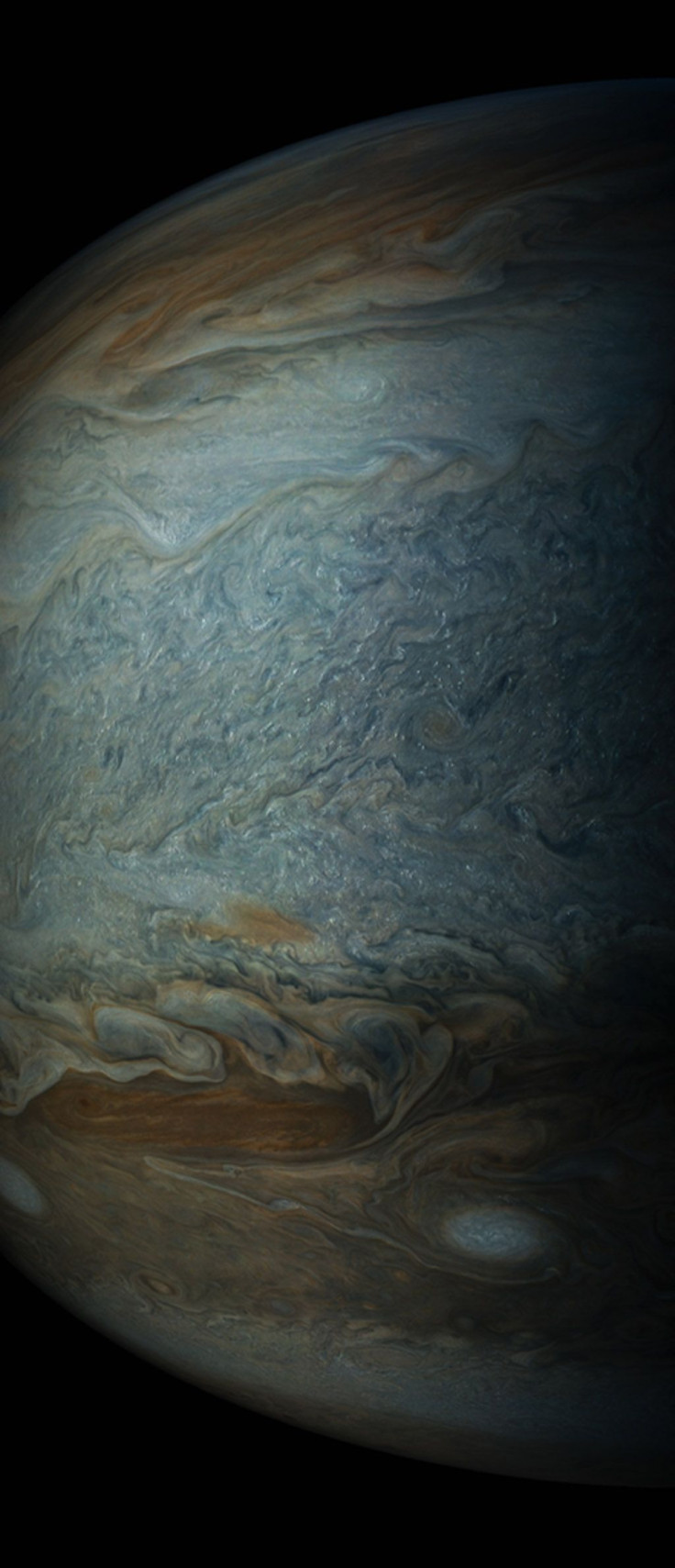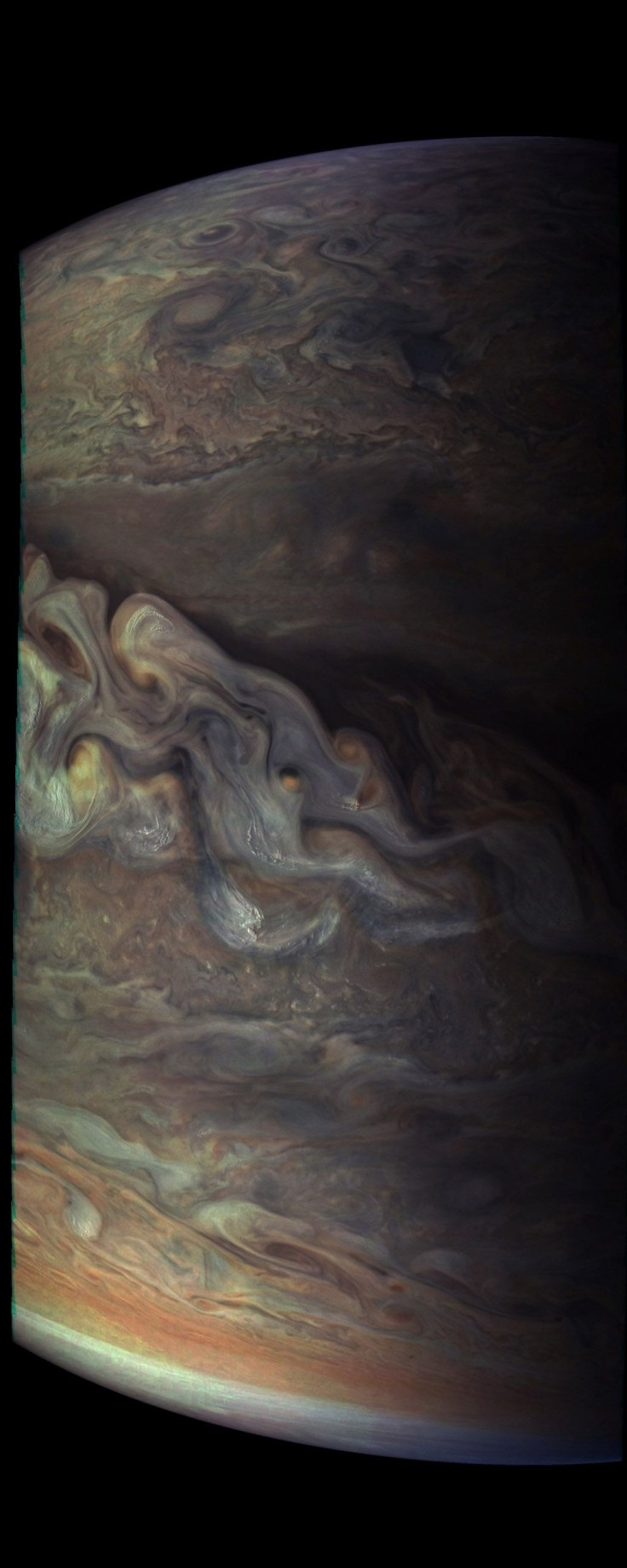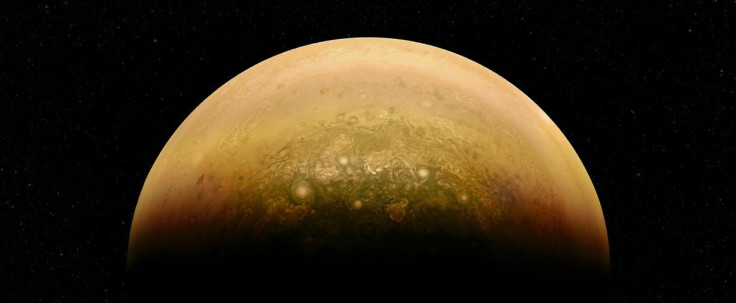Jupiter Photos: NASA's Juno Mission Reveals New Discoveries About Planet

Recently released beautiful photos of Jupiter show the gas giant in a new light and answer some questions researchers have been asking for a long time.
The Juno mission that launched in 2011 reached Jupiter last July and began observing right away. The results come from a series of flybys that began in late August that brought the Juno craft within 2,600 miles of Jupiter's highest clouds. The information the craft was able to collect has confirmed one theory researchers had: Jupiter is more complex than they originally thought.
Read: Jupiter’s Chaotic Cyclones, Massive Magnetism Revealed In First Juno Results
Juno is orbiting Jupiter on a polar orbit track. Most days it's observing from a far, but once every 53 days Jupiter gets close. The craft approaches Jupiter from the north pole and spends two hours traveling from the north pole to the south pole of the planet, said NASA. During these two hours the eight instruments the craft is equipped with are used to collect as much data about Jupiter as possible. These flybys result in six megabytes of data that can take up to one and a half days to download.
The next time the craft passes over Jupiter it will observe the red spot, which is what the planet is best known for. This Juno Jupiter flyby will occur July 11.
The photos Juno has successfully collected are breathtaking and show Jupiter in a way we've never seen it before.
This photo was taken of Jupiter's south pole, it shows the planet from about 32,000 miles away. This shows a cyclone on the planet that's about 600 miles in diameter. It's actually several photos stitched together to show the pole fully illuminated by the sun. "If you looked at this picture and someone had shown it to you a few years ago I don't think anybody would have guessed this is Jupiter," said Scott Bolton, a principle investigator on the mission, said during a conference Thursday.
As Juno flies by Jupiter it captures photos, these are photos the JunoCam captured as it flew from one pole to the other. The images are frequently processed by members of the public. "This takes real work. When you download a JunoCam image and process it, it's not something you do in five minutes. The pictures that we get that people upload back up onto our site, they've invested hours and hours of their own time and then generous return that to us, so it's really been remarkable," said Candice Hansen, a Juno co-investigator.

Jupiter's clouds can be seen in this photo in a more detailed way than ever before. JunoCam captured this photo on May 19. The small-looking clouds are actually gigantic, about 30 miles wide and just as tall, said NASA.
Read: Cassini Observes Summer Solstice On Saturn’s Northern Hemisphere

These waves of clouds are most likely made of water or ammonia ice.

Jupiter's swirling atmosphere looks more yellow and orange when it's basking in the sunlight.

The findings were published this week in two journal articles. The live stream during which panelists explained the research and findings is available online.
© Copyright IBTimes 2025. All rights reserved.





















